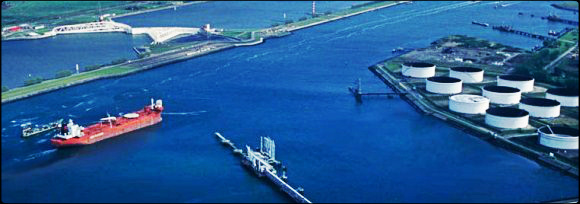Maintaining a robust global energy marketplace is critical to meeting rising global energy demand. The backbone of the global energy marketplace is free trade, which enables energy to move across various boundaries by pipeline, ship, railway, or in the case of electricity, by transmission lines. Oil and natural gas are the most widely traded energy sources, but other forms of energy, including coal, electricity and some renewable fuels, are also actively traded on the international market.
Trade has always been an important aspect of world energy markets. It will be even more important in the future.
In terms of oil, the world’s single biggest energy source, it is expected that about half of global liquid fuels demand will continue to be met via international trade by 2040. However, on the regional level, there will be some important changes in trends over that time period:
- In the Americas, North America is expected to shift from a significant importer of petroleum supplies to a fairly balanced position by about 2030 as its domestic production rises substantially. Latin America, already a net exporter, will see strong growth in exports by 2040 even as local demand increases.
- Europe is expected to remain a significant importer of liquid fuels. The Russia/Caspian region will remain a net exporter, even as its production gradually declines after 2030.
- The Middle East is expected to expand oil exports as its production increases through 2040. Africa, another significant exporter today, is expected to see its exports decline over the coming decades as local demand rises but production remains steady.
- The Asia Pacific region already relies on imports for about 70 percent of its liquid fuels demand; this proportion is expected to grow even higher through 2040 as local demand grows by about 50 percent. Net imports are likely to rise by roughly 75 percent.
International trading will play an increasingly important role in meeting global demand for natural gas. Traded volumes of natural gas in 2040 are expected to be 2 1/2 times the 2010 level, with most of this growth coming from LNG.
- North America is expected to shift from a net importer of natural gas to a net exporter by 2020, as production growth from shale and other unconventional sources outpaces demand. Latin America is expected to remain fairly well balanced through 2040 as local demand absorbs local production.
- Europe, which imports about 45 percent of its gas requirements today, is likely to see that percentage rise to about 60 percent by 2025 as local production continues to decline.
- The Russia/Caspian region will continue to be a significant exporter of natural gas, with flows likely to grow by 170 percent as production rises by about 40 percent through 2040.
- The Middle East and Africa will continue to be natural gas exporters. Middle East gas exports are likely to change only marginally through 2040, as production grows by roughly 70 percent while demand grows by about 85 percent. On the other hand, Africa is likely to see its exports grow from 2025 as production increases exceed growth in local demand.
- The largest shift in net imports is likely to be seen in the Asia Pacific region, where the percentage of natural gas demand met by imports from outside the region is expected to rise from 15 percent today to 35 percent by 2040. Net gas imports into Asia Pacific are expected to rise by about 300 percent through 2025 and by about 500 percent by 2040.
It is interesting to note that for both oil and natural gas, Europe and Asia Pacific will remain the two key importing regions, while the Middle East and the Russia/Caspian region remain the two largest exporters to world markets.
Source: ExxonMobil report “The Outlook for Energy: A View to 2040”















Leave a Comment